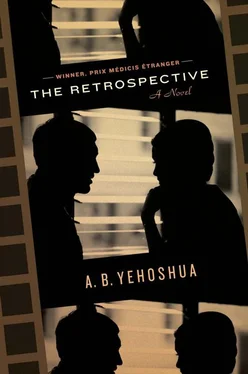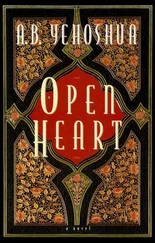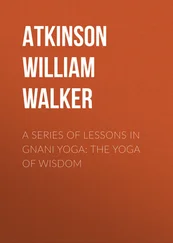Is this teacher, wonders Moses, trying to save him money? For he stubbornly argues with the museum director, demanding that he not make the guest of honor and laureate of the retrospective pay for admission. Moses quickly takes out his wallet and pays for them both. The museum director offers, perhaps by way of compensation, to show him around, but Moses declines. He who pays to get in deserves an exemption from the erudition of an enthusiastic guide.
Rodrigo is right; even at first glance, the sculptures are mediocre and the paintings boring. No need to impersonate art lovers strolling through the exhibits. Moses picks up his pace and makes for the exit. “Already? Your visit is over?” The museum director is dismayed, and even as Rodrigo tries to apologize, Moses turns and asks him if he happens to have heard of Caritas Romana. He has found a reproduction hanging in his hotel room but without the name of the artist. And with his hands and lips he acts out the scene of the old man and the bare-breasted woman.
The museum director has heard of this motif in Renaissance art but does not exactly remember the story behind it. Perhaps the reproduction is on loan from the museum archive and listed in the catalog.
“The museum exhibits pictures in the hotel?”
“We have dozens of reproductions gathering dust in our storeroom, so it makes sense to lend them for a nominal fee to the Parador, which routinely rotates the pictures for the sake of bored chambermaids, or regular guests who are pleased to find something new each time they visit. Yes, there are still people who are not indifferent to the pictures hanging by their beds in a hotel, even when they stay for only one night.”
“True,” says Moses. “Like me.”
He hurries Rodrigo to the square and gladly accepts the suggestion that they go to the promenade for a view of the cathedral on a clear day from another, more distant vantage point. They walk briskly through the alleys of the Old Town, passing squares and fountains and gates, arriving at a grassy expanse with a broad promenade from which the cathedral, in all its sculpted glory, may be seen. Above it, like the veil of a floating bride, hover wisps of morning fog that the bright sunshine has yet to dispel. Farther along the promenade, in a pleasant little garden paved with white marble, stand two stern-faced women arm in arm: one in a fiery red coat with a folded black umbrella in her hand, staring ahead with steadfast grimness, and her companion, a flamboyant woman in a headscarf and shiny blue robe, looking sideways and extending her hand toward the sky as if asking a question. Their thin, straight legs are firmly fixed to the pavement with bolts, needing no further means of support.
“What’s this?” asks Moses.
“These pieces are left over from a whole sculpture garden that students from the art college set up years ago as a kind of fantastical secular response to the seriousness of the cathedral and its statues of the saints.”
“But who are these figures?”
“They are called the Two Marys, but they are not saints. If you keep walking, you’ll see another sculpture on the bench.”
Indeed, a few steps farther on, sitting upright with legs crossed at the edge of a public bench, is the figure of a skinny, gray-haired intellectual with a long pointy beard, clad in a gray suit, peering intently into the far distance through oversize eyeglasses.
“What’s he made of?”
“Mostly rigid plastic. Like the clothes of the Two Marys.”
“And he manages in the cold and the heat?”
“Does he have a choice?” jokes Rodrigo. “Go on, feel him…”
But Moses declines to reach out to the weird intellectual.
A group of students, boys and girls, sit on a nearby lawn with books and notebooks, apparently studying together for an exam. Some of them spot Rodrigo and rush over to greet him. “Yes,” he explains to Moses, “they are my high school students, that’s actually my main job.” And as he banters with his students, he does not fail to introduce them to an important foreign film director who has fond memories of the days when he, too, was surrounded by students.
An Israeli retrospective at the archive of the film institute? Yes, they think they may have heard something of it. The sight of the youngsters chatting with a beloved teacher spurs the suspicion that flickered at the museum. Trigano? Who else could have informed the Spanish archive about early Israeli films? Who other than the scriptwriter is still loyal to those ragged old movies? The cameraman is dead, the soundman left the country, the editors dissolved into other films. Only the writer could try to augment the value of his forgotten work in a faraway film archive, thus also tarnishing what his director had later done without him.
But how did the films get here? Did Trigano ship them over, or bring them himself? The possibility that his scriptwriter had preceded him here as a pilgrim captures Moses’ imagination, so much so that the former collaborator who tore their partnership to shreds hovers in his mind’s eye alongside the kings and saints arrayed in the heights of the distant cathedral.
Does this explain the mischief of the little priest, who every morning sends him a different escort with a new list of films? Trigano doubtless told him about their breakup and advised him to conceal his visit and also not to tell the director in advance what they planned to screen in the retrospective, lest he refuse to come.
The students have returned to the books and notes they left on the grass, except for two fawning girls who find it hard to leave the handsome young teacher.
Yes, Moses is ready to believe that with a bit of tugging, the thread in his hand can be woven into a fuller hypothesis. For if the writer brought the films himself, he also helped with the dubbing. All of this in secret, so that Trigano could construct a hidden reproach to the man who rejected him.
The teacher eventually succeeds in breaking free of the two girls, and he hurries to apologize with a sigh that is also one of satisfaction.
“May I ask you a personal question?” says Moses.
“By all means…”
“Are you married?”
The young man’s laughing face reddens.
“No… but it’s probably time.”
“Because I was also like you, a young teacher in the upper grades of high school, and though I wasn’t as handsome as you, I still felt I was a constant topic in the thoughts of my students.”
Rodrigo laughs. “It’s also a teacher’s job to nourish the imagination of his students.”
“May I ask something else?”
“Please.”
“Was there a visitor recently here at the archive, an Israeli?”
Rodrigo doesn’t remember any Israeli. But Moses persists. “A man around sixty, thin, dark skin, named Shaul Trigano. He wrote screenplays many years ago.”
The Spaniard closes his eyes, plumbing his memory. But for naught. Trigano is a name clearly accessible to the Spanish ear, and yet, no, he doesn’t remember any Trigano.
But Moses has a feeling that even if the Spaniard doesn’t remember the name, he knows who he is, so he presses on and tries to portray the wanted man, picturing the young Trigano in his mind and improvising an up-to-date character, blending all possible changes visited by time since last they met.
The Spaniard turns away and lowers his gaze in one final effort, but he remains faithful to his earlier response. No, there was no Israeli recently at the institute, though of course he cannot claim to know everyone who visits here.
3
AS MOSES ENTERS the hotel, the desk clerk points to an old woman who is waiting for him. This is the art history teacher enlisted from a neighboring city; she has arrived early. Though she is long retired, she is pleased to oblige the desk clerk, her diligent student, who has proven that after all these years he has not forgotten her. Moses introduces himself, overcome with feeling for this sprightly old lady with the intelligent face and snow-white hair. For a moment it seems his mother has sprung from the film screened the day before and come back to life to educate him.
Читать дальше












